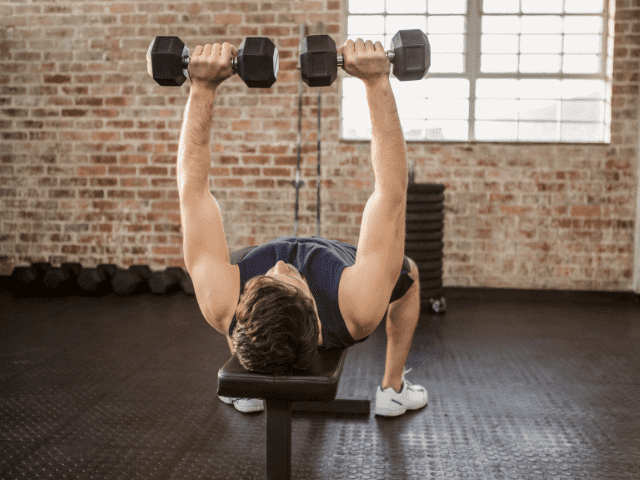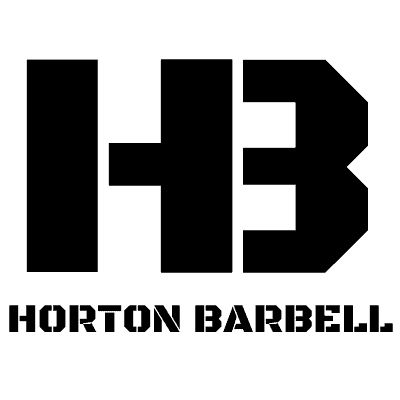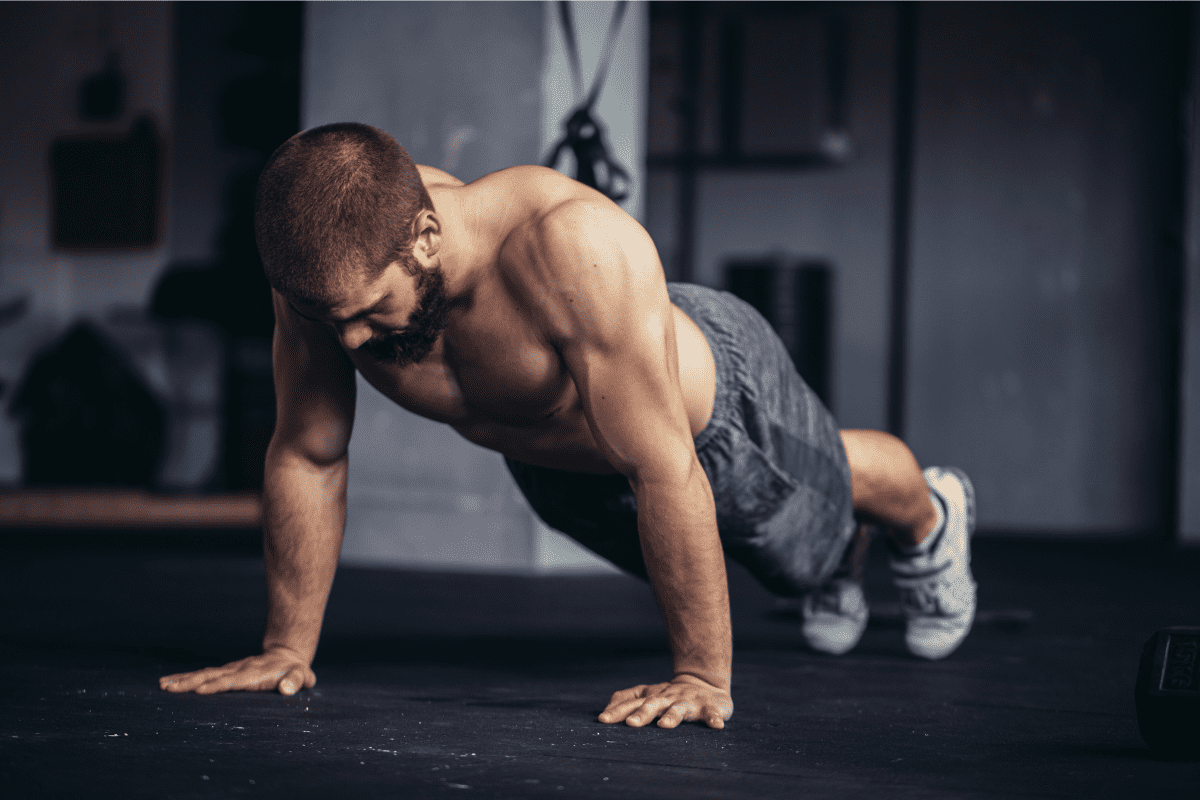Push Ups (How To, Muscles Worked, Benefits)
One of the most basic but also probably one of the most important exercises a person can master is the push-up. The push-up is used by many strength and conditioning specialists, physical therapists, sports medicine professionals, and even the military to gauge upper body strength and strength endurance.
In this guide, I will be going over how to do a proper push-up, coaching points, common mistakes, and some modifications in case you need them.
How To Do Push-Ups
Equipment Needed:
- None
For modification purposes though:
- Barbell
- Med ball
- Bench or box
Step-by-Step Instruction
- Lie face down on the floor.
- Pull your toes in so that you’re on the tip of your shoes.
- Eyes should be focused straight down or slightly up.
- Pull your hands close to about the nipple line of the chest and bring them out about 2-3 inches away.
- Take a deep breath, engage the core and brace.
- Push yourself up in one unit. There should be no sagging of the waist. The entire body from head to toe should move up and then back down in unison.
- Feel your scapula upwardly rotate and make sure the antagonist muscles (Back and biceps) are fully engaging.
- Lock out your push-up and pause.
- Slowly lower yourself back down and get ready for the next repetition from just above the ground. Do not fully relax at the bottom of the push-up unless your program specifies.
Coaching Points
Take your time and master the push-up. The benefits of doing sound push-ups will pay dividends for your shoulder health and the potential to maximize your upper body strength.
Keep the elbows at a 45-degree angle. For maximal chest, shoulder, and rotator cuff engagement, do not let the elbows flare out away from the middle. Also, do not let the elbow hug right next to the torso.
I would highly recommend this movement to any athlete. It provides all the benefits a pressing movement can offer with minimal risk.
Common Mistakes
By far the biggest mistake I see in the push-up is lifters not using a full range of motion. Push all the way up and slowly lower yourself back to about an inch of the ground.
Elbow angle. Another common mistake in pressing movements is lifters letting those elbows flare. Remember to keep your elbows at 45 degrees to keep your shoulders healthy.
Another mistake is lifters go too fast with their push-ups. Push-ups are commonly programmed for strength and hypertrophy. This means time under tension is key. Take them slow and perfect the movement to yield maximal results.
Benefits of Push-ups
Some of the key benefits of push-ups include:
- Strengthens the upper body: Push-ups are an excellent way to build strength in the chest, shoulders, and arms.
- Increases muscle endurance: Push-ups can help to improve your muscle endurance by challenging your upper body muscles to work for an extended period of time.
- Can be done anywhere: One of the great things about Push-ups is that they can be done almost anywhere with no equipment needed, making them a convenient exercise to incorporate into your fitness routine.
- Improves overall functional strength: Push-ups require a combination of strength and stability, which can translate to improved functional strength in everyday activities.
In addition to these physical benefits, push-ups can also be a great way to boost your mental toughness and confidence.
Muscles Worked
- Chest
- Shoulders
- Triceps
- Biceps (Isometric and eccentric contributors)
Push Up Modifications
Sometimes a full range of motion push-up is too advanced for a novice lifter. If this is the case for you, no worries. There are plenty of modifications that can be made and still benefit from the exercise.
Eccentric Push Up
Only do the eccentric (lowering) movement of the push-up. Get to the starting top position and slowly lower yourself down as one unit. Engage your upper body muscles and keep the core tight until you are back on the ground. Then get back to the starting position by going up to your knees and then straightening back out for the next rep.
This is a great option for lifters who need time under tension and need to develop strong cores.
Incline Barbell Push Up
Set a barbell at a height that allows you to perform perfect reps for 8+ reps. Take your bench press grip and start knocking out push-ups. This is a great alternative for novice and veteran lifters to get extra volume in on their workouts. These can also be done on a bench.
Alternating Med Ball Push-Ups
Grab a med ball that is firm. Perform a push-up with one hand on the med ball and the other on the ground. Stabilizing your shoulders, roll the med ball to the other hand between reps.
Push-Up Alternatives
Need an alternative for Push-ups? Here are a couple of exercises you may be able to use as an alternative.
Need even more options? Here are all my favorite Push-up alternatives.
Dumbbell Bench Press

If you have a pair of dumbbells, then Dumbbell Bench Press can be a perfect alternative for Push-ups.
Dumbbell Bench Press is beginner-friendly and targets the chest in much the same way as Push-ups.
Dips

Dips, like Push-ups, are a bodyweight exercise. However, Dips are much more challenging than Push-ups.
You’ll need either a dip attachment for a squat rack or a stand-alone Dip Station. But, if you have access to either of these pieces of equipment, then I would highly recommend incorporating Dips into your strength training program.
Push-up Supersets
Want to turn your Push-up sets into supersets? Here are a few exercises that pair well with Push-ups:
- Inverted Rows
- One Arm Rows
- Crunches
Want more ideas? Check out this list of Push-up superset pairings.

Get Shredded… For Free
Get a free workout Monday through Friday, posted right here on Horton Barbell. These workouts are designed to help you get strong, in shape and look great at the beach!
More Info and Links
Looking for some more great exercises to increase your upper body strength? Head over to our exercise library to find step-by-step exercises to help you get stronger. All for free.

